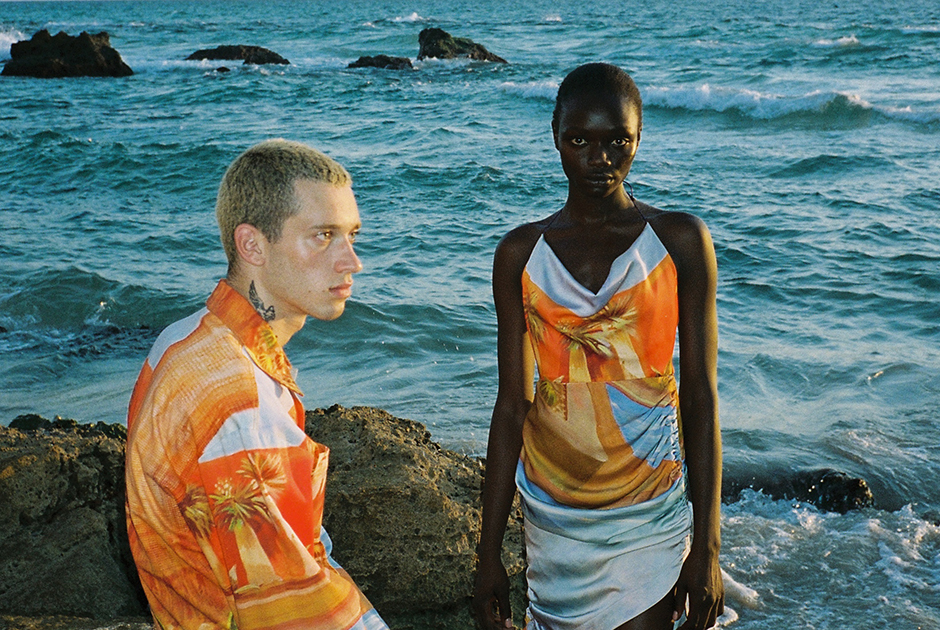The “Busy Season.” Depending on what you’re producing, or for whom, that phrase likely conjures up a specific time of year. Producing and decorating licensed gear for schools means the “busy season” could be late summer—stocking shelves and fulfilling rush orders to coincide with the beginning of a new year. If, on the other hand, most of your business comes from outdoor sports or festivals, early spring might be your “busy season.”
Then, of course, there’s the busiest “busy season” of all for many decorators—Halloween through New Year’s. The holiday rush. Black Friday. Gift-giving. Adding to the complexity of this time of year is the fact this time period also offers a last chance of making a prosperous year even more profitable or to at least break even when times are tough.
Unfortunately, more traditional fashion, apparel and textile production/fulfillment mechanisms are in many ways limited in terms of both responsiveness and efficiency. If your operational strategy isn’t built with peak periods in mind, you may find yourself frantically working overtime at the last minute to meet demand—a predictable yet hellish “crunch time” that leaves you especially vulnerable in the event anything goes wrong: think technology malfunctions, supply chain disruptions, natural disasters, or other unforeseen circumstances.

Digital decorating’s flexibility also allows you to reduce waste. Photo courtesy of Kornit
On the other hand, if your operational strategy is geared toward meeting peak demands periods, production may take place months ahead of time in anticipation of a demand that never comes to pass or finds itself delayed by significant periods of downtime—or both.
Fortunately, among the many pluses of going with versatile, single-step digital textile print capabilities is the fact the need to forecast such critical figures disappears. What sells today, we make today. If something different sells tomorrow, we’ll make that tomorrow.
Equally important, in the event there’s ever an opportunity to take advantage of a new, wholly unexpected trend or demand—a virtual certainty in this age of social media monetization, micro moments and the explosion of apps giving creators outlets for monetizing inspirations and building personal brands and NFTs—agile digital production capabilities empower producers to take full advantage of those opportunities and grow, regardless of broader economic conditions. Again, what sells on any given day, we make that day.
This is true no matter the digital decorating technology, including both direct-to-garment (DTG) and direct-to-film (DTF) systems. At my own company, Kornit, we also make it possible to not just apply designs or decorations this way but create entire on-demand customized fabrics through our “Direct to Fabric” technology, as found in systems like the Kornit Presto MAX system.
A prime example of this kind of production paradigm at work can be seen at Trevco, an on-demand fulfiller of custom and licensed apparel with production facilities in Michigan and Utah. While the company employs a variety of production techniques to meet the demand for range of products in a timely manner, its use of pigment-based DTG production allows it to successfully meet even the heaviest seasonal volumes while at the same time supporting a consistently positive growth trajectory.
Describing these systems as a “game-changer” for on-demand fulfillment, vice president of operations James Drake says quick, digital production means the company no longer must worry about pre-buying shirts and then pre-printing them to get them to market in time.
“We can grab a blank, print it after the order’s placed and then ship it,” Drake says, noting the approach also provides benefits in terms of speed of production and the amount of labor involved. “A lot of times we work off of a one-day or two-day turnaround and being able to do that really saves a good amount of money.”
Then there are the environmental benefits of this kind of manufacturing. Put simply, in the same way ending the need for forecast-based production helps reduce overstock and optimizes profit margins, producing only what you need when you need it places fewer demands on the planet. By producing only what’s sold, you are creating less landfill waste and using less energy. You are also producing less greenhouse gas emissions—all while offering consumers and brands more graphic and color possibilities than ever before, spanning a broader range of fabrics and applications without compromising quality or durability.
It is for this reason we at Kornit believe the perfection of sustainable, on-demand digital textile production capabilities are key to making apparel production less wasteful, more eco-friendly, and more responsive to the needs of a wildly creative and increasingly web-centric global marketplace. And we’re not alone. An increasing number of producers who’ve shifted operations to on-demand digital production also views sustainability as a core component of a growth strategy, rather than a compromise than must be accounted for.
“I think all companies should be doing absolutely everything they can do within their power to be as sustainable and eco-friendly as they possibly can,” says Axel Jones, director of Welsh apparel fulfiller My Needs Are Simple.
“I want fashion to be fun to create, to make people feel wonderful, so they have a unique piece they wear forever, which is the most sustainable garment available,” agrees Sherri Barry of Arizona-based fashion incubator The Fashioneer, which uses sustainable on-demand production to eliminate barriers to fulfillment for private and aspiring fashion designers. “Technology like this allows all of these creators to have their creations printed, automated, cut, packaged, and shipped to their consumer.”
Bottom line: Digital on-demand production results in creating only what you sell, meaning higher margins and less waste. That generates the highest possible yield from your “busy season” while delivering an experience that is eco-conscious and elevates the apparel industry to something that makes producers, creators, and consumers feel good, in more ways than one.
Don Whaley is Vice-President Sales-America’s for the cutting-edge decorated-apparel equipment manufacturing company Kornit Digital. For more on Kornit and its eco-friendly approach to the fashion industry, go to kornit.com.





